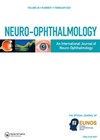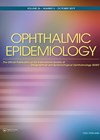
Journal Reviews
Detection of post stroke visual impairment in variety of cohorts
The Impact of Visual Impairment after Stroke (IVIS) study introduced a standardised vision assessment protocol across three acute stroke units in the northwest of England, with a similar demographic population (predominantly white British). The study reported similar rates of visual...
Prevalence and incidence of uveitis
Uveitis encompasses a group of diseases characterised by the inflammation of fovea uvea which are potentially vision threatening. However, the frequency of this condition is unclear. This systematic review and meta-analysis aimed to provide estimates of the frequency of uveitis...






